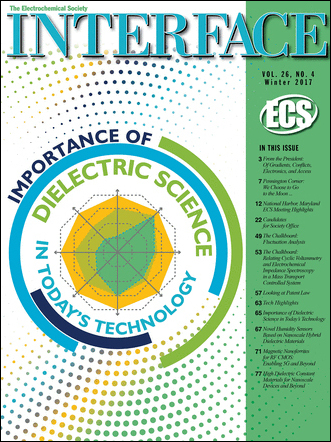Below is an excerpt from an article published in the winter 2017 edition of Interface.
By: Durga Misra, New Jersey Institute of Technology
 The explosive progress of information technology and 5th generation communication technology enables the introduction of the Internet of Things, where the network of physical objects—devices, vehicles, and buildings embedded with sensors, electronics, software, and network connectivity—permits these physical objects to collect and exchange data. The use of dielectric materials in sensors for a multitude of applications such as self-driving cars has made the dielectric science and technology research even more significant than before.
The explosive progress of information technology and 5th generation communication technology enables the introduction of the Internet of Things, where the network of physical objects—devices, vehicles, and buildings embedded with sensors, electronics, software, and network connectivity—permits these physical objects to collect and exchange data. The use of dielectric materials in sensors for a multitude of applications such as self-driving cars has made the dielectric science and technology research even more significant than before.
More than seventy years ago, in 1945, it all started with establishing the Electric Insulation Division in ECS to offer an interdisciplinary forum to discuss the science of the materials used for electrical insulation in power transmission. With the advancement of technology, when integrated circuits became popular, the division became the Dielectrics and Insulation Division in 1965. In 1990, it became the Dielectric Science and Technology Division due to extensive growth in electronic manufacturing technology. Today, the division still provides a strong interdisciplinary research environment.
In this issue of Interface we have focused on some of the current topics that are an integral part of current and future technologies.
The following is a roundup of technical articles published in the winter 2017 issue of Interface:
- Novel Humidity Sensors Based on Nanoscale Hybrid Dielectric Materials
Zhi David Chen - Magnetic Nanoferrites for RF CMOS: Enabling 5G and Beyond
Ranajit Sai, S. A. Shivashankar, Masahiro Yamaguchi, and Navakanta Bhat - High Dielectric Constant Materials for Nanoscale Devices and Beyond
Hiroshi Iwai, Akira Toriumi, and Durga Misra

